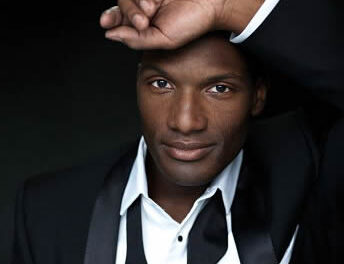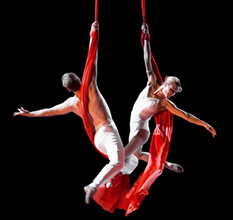Joint Raleigh Chamber Music Guild – NC Museum of Art chamber music concerts in the intimate auditorium of the museum are intended to present some of the state’s finest musicians in programs linked to either special exhibits or aspects of the collection. The Lawrence-Shteinberg Duo, consisting of violinist Kevin Lawrence and pianist Dimitri Shteinberg, are based at the University of North Carolina School of the Arts and are perfect examples of this plan. Lawrence has long been active throughout the Triad and Shteinberg has impressed many during his short three seasons in the area.
The program consisted of Ravel’s Sonata for violin and piano, Cowell’s Homage to Iran, Copland’s Sonata for violin and piano, and Schoenfield’s Three Souvenirs. Before the concert began, Lawrence spoke briefly about the music and identified the Museum’s paintings he thought best related to each piece of music. To Ravel’s “impressionist” sonata (Ravel loathed the term) he linked the bright and colorful Garden Parasol (1910) by the American Frederick Carl Frieseke. A theme of the duo’s program was “The Voice of the People: Transcending Artistic Boundries,” in some cases how different cultures view another’s culture. Lawrence paired Jan Lievens’ The Feast of Esther (c.1625), an imagined exotic Persian celebration, with Cowell’s work which incorporates the sound of Persian drumming. All-American Copland was matched to Spring on the Missouri (1945) by Thomas Hart Benton. The popular dance form of Schoenfield was associated with a print or poster, Merton of the Movies, a work by Roy Lichtenstein that is almost commercial art.
Maurice Ravel (1875-1937) wrote that his Sonata for violin and piano is for two “essentially incompatible instruments, which not only do not sink their differences, but accentuate the incompatibility to an even greater degree.” He stressed the unique tone color of each instrument and makes no attempt to blend their sounds at all. The spare first movement interweaves lyrical and sudden outbursts of staccato sections. The wonderful second movement, “Blues,” was inspired by the French craze for American jazz. The finale is a headlong perpetual motion for violin.
Lawrence and Shteinberg played the socks off this masterpiece! Both players brought out the full palette of instrumental color and tone. Lawrence’s intonation was immaculate and both his and Shteinberg’s articulation were crystal clear no matter the tempo. “Blues” was a delight as Lawrence’s violin mimicked the wail like a saxophone while Shteinberg made guitar-like strumming sounds from the piano.
In view of recent history, Henry Cowell’s (1887-1965) study of music in Iran in 1956-57, composed on a U.S. government grant, was ironic. Lawrence said Cowell was largely self-taught which was perhaps the best route for such an experimental composer. The composer drew upon Persian music he had heard when he wrote Homage to Iran (1959). Especially in the first and last movements, the pianist must use a free hand to mute the strings with his fingers to simulate the sound of a Persian drum called a zarb. The interlude, marked “Presto,” is what Joel Sachs in the program note to Naxos CD 8.559193 aptly calls “a Cowellesque ‘flight of the bumblebee.”’
Lawrence’s violin’s improvisatory song was set against Shteinberg’s constant “drumming” baseline in much of the first movement. Both players were more than up to the challenge presented by the headlong rush of the Interlude. They brought out all the imaginative sound quality of the finale’s set of variations on the chant-like song heard in the first movement. This work deserves to be performed more frequently.
While Aaron Copland (1887-1965) began composing in a cutting edge style, he soon began to deliberately compose in an accessible style featuring open, slowly changing harmonies that became identified as American music. It is interesting to note that Copland, who grew up in the tenements of Brooklyn as the child of immigrants, composed music evocative of the wide open spaces of the West. Copland said his Sonata for violin and piano (1942/42) “is an uncomplicated and direct statement” and is lyrical with emphasis on the lyrical qualities of the violin. Austere piano chords open the first movement which contrasts lyrical and fast-paced sections. There is a hymn-like quality to the second movement’s violin line hovering about the piano’s slowly rising and falling scale line. The snappy finale is rhythmically complicated and is contrasted with an alternately light and serious tone.
Lawrence and Shteinberg brought out the spare quality of the scoring while giving full expression to its elegiac lyricism. They gave the jazz-like elements of the finale a fine sense of spontaneity.
The Café Music of Paul Schoenfield (b. 1947) has been frequently played by visiting piano trios. He has drawn upon popular music for many of his works including the Three Souvenirs which the Duo selected. Only three of the original four sections were played: “Samba,” “Tango,” and “Square Dance.” “Tin Pan Alley” was omitted. These dances seem to have been given more sophisticated and stylized treatments than the composer used in Café Music.
It was delightful to listen to Lawrence and Shteinberg plumb the subtly shifting rhythms of these pieces.












